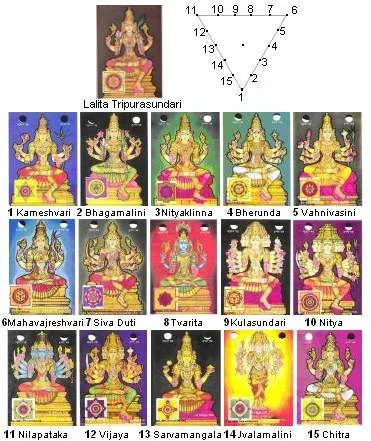S
s007bala
Guest

Why and How the Yantra Works
At this point you will have a complete Navagraha Yantra – Mystical Diagram of the Nine Planets. But you probably don’t understand exactly why the numbers are so important and how they empower each planet to be at it’s best and work best with one another. So now I’ll explain.
First of all you’ll need to understand the importance of the number 9.
There are 9 planets. This yantra has 9 divisions within 9 divisions. Why is 9 so important. Because the symbology of human thought is a decimal, 10 based system – thus “9” is the highest number you can have in any single digit place. Therefore the number 9 is symbolic of the most powerful, the ultimate stage.
In this specific context 9 represents the planet’s highest capacity of power: “exaltation.” By association of the planets with the number 9, this yantra empowers each planet to attain its exaltation state. Let me show you how.
Let’s take the Sun first. Every row and every column of the Sun’s formula add up to 15. To derive the numerological value of a number greater than 9, add the digits together until you reach a sum below 9. For example. 15 = 1+5, or 6. Thus the numerological value of 15 is 6. Notice that 6 is a triangulation of 6 (3, 6, and 9 form a triad with 9 at the top).
Now, there are 3 rows and 3 columns in each formula. So to get the total value, we add them all up, or simply multiply by 6. So the total value of the Sun’s formula is 15x6, which is 90. The numerological value of the Sun’s formula is thus 9+0, which is 9.
6 1 8 =15
7 5 3 =15
2 9 4 =15
=15 =15 =15 =90
Now do the same for the other planets, the triad value and the total value, expressed as numerological numbers are:
* Sun: triad is 6, total is 9
* Moon: triad is 9, total is 9 (18x6= 108… 1+0+8=9)
* Mars: triad is 3, total is 9 (21x6=126… 1+2+6=9)
* Mercury: triad is 6, total is 9
* Jupiter: triad is 9, total is 9
* Venus: triad is 3, total is 9
* Saturn: triad is 6, total is 9
* Rahu: triad is 9, total is 9
* Ketu: triad is 3, total is 9
So we find that this formula brings each planet into contact with 9 – thus connecting it to its highest potential energy.
Furthermore if you now make a grand total of all the formula totals for each row and column in the greater 9 squares of the yantra, you will find that this yantra creates harmony between all nine planets, but putting them all in a relationship which equals 9.
For example, across the top row we have Mercury’s total (24x6=144) + Venus’ total (30x6=180) + The Moon’s total (18x6=108) equaling a grand total of 432. To get the numerological value of 432, 4+3+2 = 9!
The same will be true for each row and each column.
144 180 108 =432
162 90 126 =378
234 198 216 =648
=540 =468 =882 =3348
The numerological value of the sum of each row and column of planets is a number equivalent to 9. For example, 378... 3+7+8=18... 1+8=9. Or 540... 5+4+0=9. And when the sums of all the rows and all the columns are taken together, the number is 3,348... 3+3+4+8 = 18... 1+8 = 9. Thus not only is each planet in this yantra operating at peak "9" efficiency, they are all cooperating together at peak "9" efficiency!
Thus the Navagraha yantra has each planet at its maximum energy, and in maximum cooperation with each other – a feat which simply cannot be accomplished with gemstones.
Using the Navagraha
You can obtain a navagraha yantra from a temple or hindu store, or you can draw it yourself on paper or with powders, paints, etc. These yantras can (and should) be additionally empowered with appropriate mantras – but even in and of itself they hold tremendous symbolic power to uplift the YOUR OWN ability to make the most from the karmas held for you by your astrological planets.
Observe and contemplate the yantra regularly. You can even worship the planets through the yantra, using incence, flowers, and candles.
sb:flame:
Last edited:









